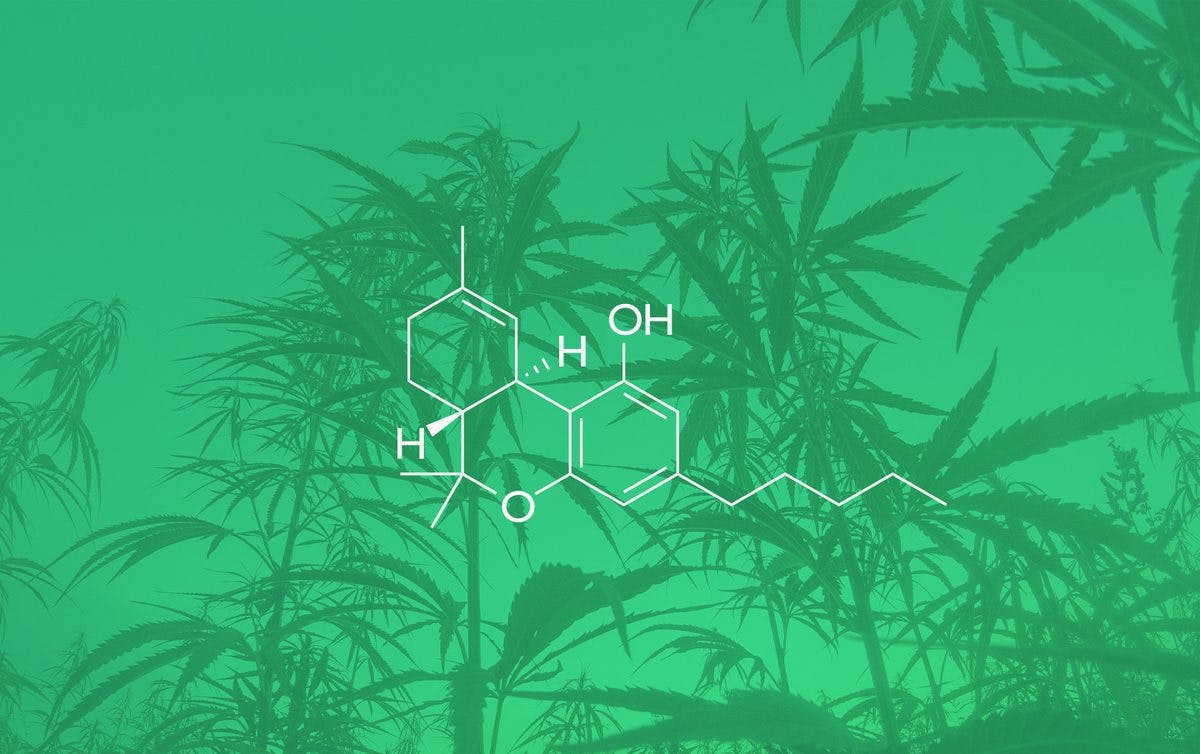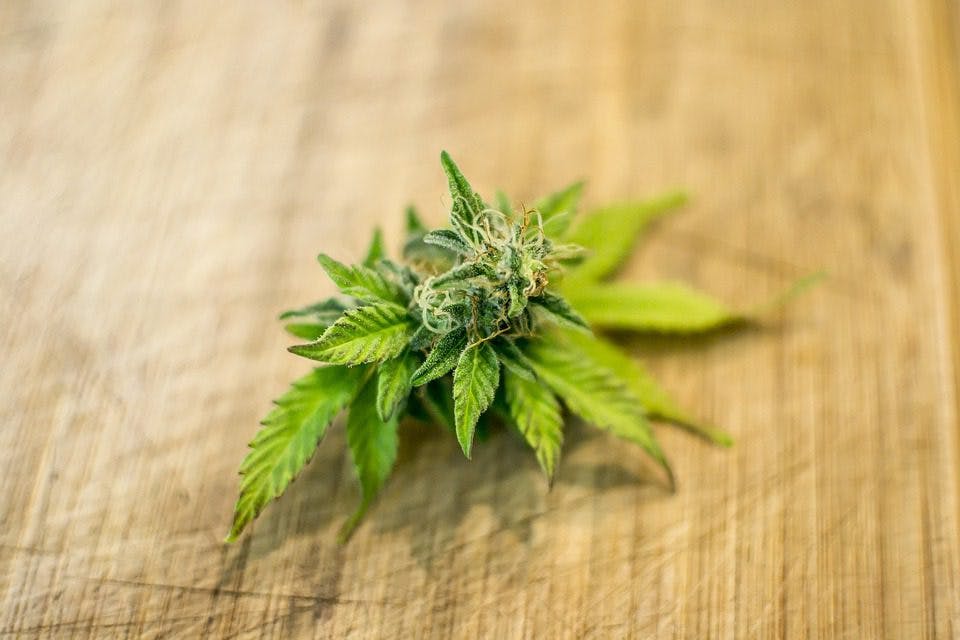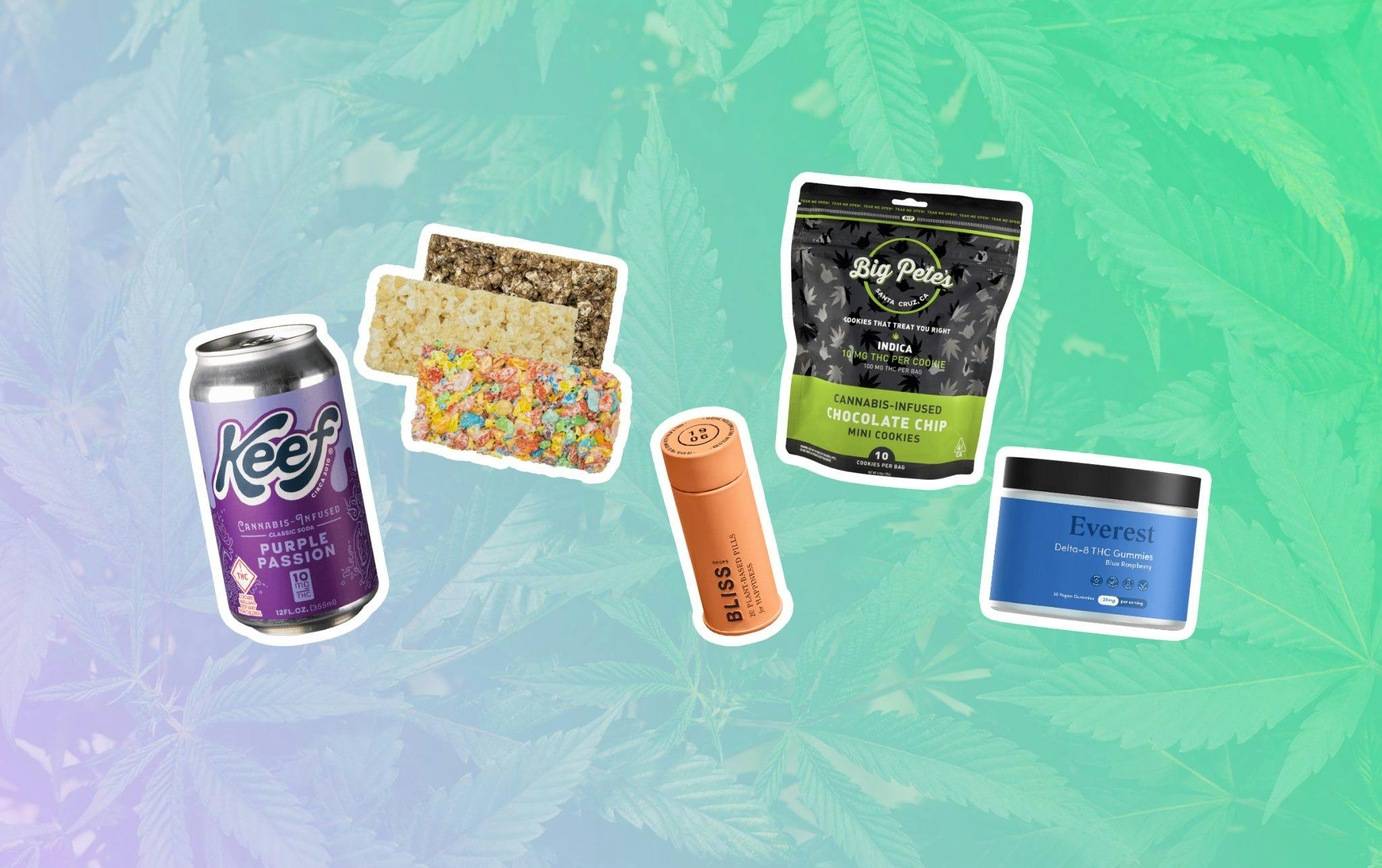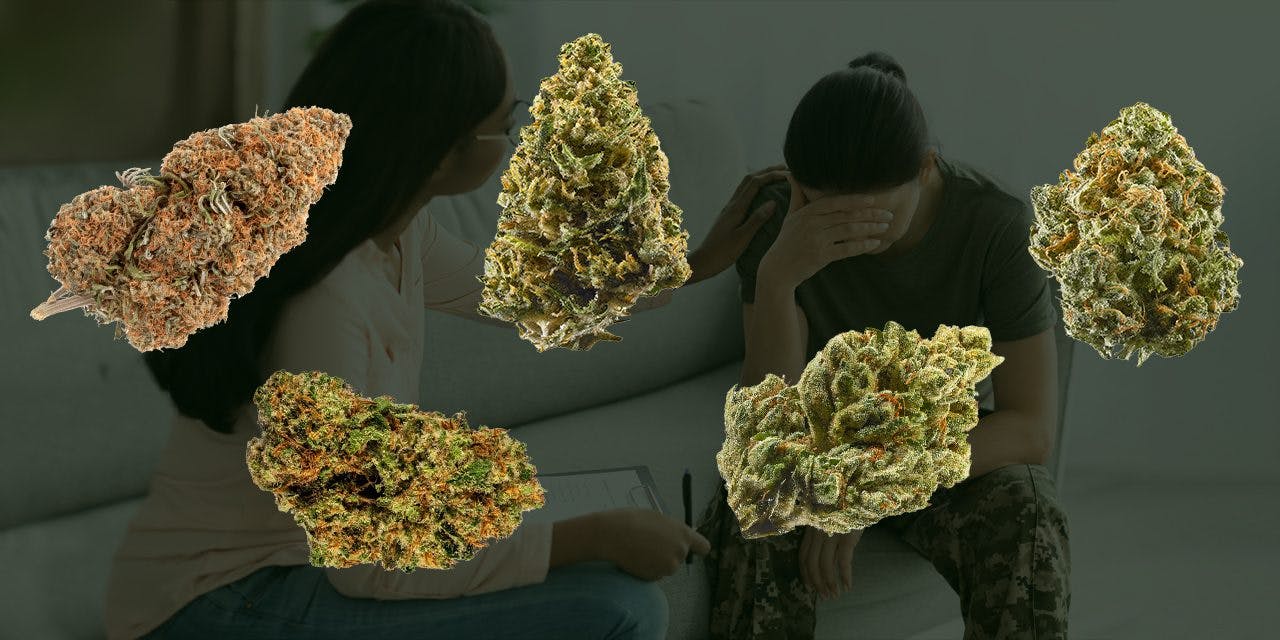What is THC?

Article written by

Tina MagrabiSenior Content Writer
Content reviewed by

Dr. Lewis JasseyMedical Director - Pediatric Medicine
Tetrahydrocannabinol (THC) is the primary psychoactive compound found in cannabis plants that creates a high feeling. Other names for THC are trans-delta9-THC or delta-9-THC. There are other types of THC, the most popular of which is delta-8 THC. Delta-8 THC is very similar to delta-9 THC, but has one slight difference that reduces delta-8 THC’s psychoactivity to some extent: Delta 8 has a double bond on the eighth carbon atom in its molecular structure; Delta 9 has a double bond on the ninth carbon atom. Another form of THC is delta-10 THC, which is also less psychoactive compared to delta-9 THC. This article focuses on delta-9 THC.
Many people misunderstand THC as the “non-medical” part of cannabis. It’s the most well-known of the 150 cannabinoids found in cannabis and turns on CB1 cannabinoid receptors in the brain. It also activates CB2 receptors in the immune system, making it an effective anti-inflammatory that can help relieve both chronic and acute pain (like muscle cramps).
It’s also shown to help reduce symptoms of diarrhea and nausea, act as an appetite stimulant, and alleviate an overactive bladder.
Another interesting point about THC is that if we hadn’t studied how it works, we wouldn’t have discovered the human body’s endocannabinoid system (ECS).
Get your medical marijuana card
Connect with a licensed physician online in minutes.
Forms of THC
You may experience the benefits of THC through numerous consumption methods. Here are some different ways you can consume THC:
- Smoking
- Vaping
- Topicals
- Edibles
- Sublingual (A.K.A. underneath the tongue)
There are pros and cons to each of these THC consumption methods.
Edibles, for example, may deliver the most potent effects, but the onset of these effects is slower than with other methods like smoking. Applying THC topically means forgoing the psychoactive experience that the cannabinoid offers. Speak with a physician to determine which THC consumption method (and dosage) is right for you.
How THC Affects the Body
The human body produces several hormones and chemicals that play a role in our feelings of enjoyment, pleasure, and bliss. One of those chemicals, anandamide, is structurally similar to THC.
The psychoactive effects of THC are thought to be due to the activation of CB1 receptors and inhibition of the enzyme fatty acid amide hydrolase (FAAH), which increases the amount of anandamide available in the body.
THC also stimulates cells in the brain to release dopamine. Dopamine is seen as the main hormone associated with pleasure, but this is not entirely accurate.
Instead, dopamine plays a role in motivation and reward-seeking behavior, as opposed to pleasure directly. This combination affects memory, happiness, movements, thinking, concentration, coordination, and sensory and time perception.
How Does the Body Process THC?
THC travels on a complex journey through the body. First, you consume THC, then the cannabinoid enters your bloodstream. From there, the body further metabolizes THC as the bloodstream sends the compound into different tissue cells. The process of metabolizing is the way your body transforms and converts chemical forms before ultimately excreting them.
The exact roadmap to how your body processes THC depends on how you consume it.
For example, if you consume cannabis orally, THC will enter the intestines, travel through the liver, and finally be metabolized through liver cells. This process is slower than if you vape THC, as the effects of THC can begin almost instantaneously in the body and brain. Rapid heart rate and mood shifts are clues that your body is processing THC.
While your body is processing THC, the compound remains active in your system. You may feel lingering effects for hours or even days until the metabolic process is complete and THC has exited your body.
Medical Benefits and Uses
When dosed appropriately, THC offers multiple medical benefits and can be used to help ease the symptoms and effects of:
- Cancer
- Chemotherapy
- Multiple sclerosis (MS)
- Nausea/vomiting
- Insomnia
- Eating Disorders
- Anxiety
- Glaucoma
- AIDS/HIV
- Post-traumatic stress disorder (PTSD)
- Chronic pain
- Neuropathic pain
- Autoimmune diseases and disorders
- Alzheimer’s disease
- Parkinson’s disease
THC can be used to help reduce or eliminate pain, increase the amount and quality of sleep, increase appetite, and decrease muscle spasticity and tremors. Small amounts of THC can be used to improve memory and potentially promote neurogenesis (new brain cell growth) in older people.
THC may generally be helpful for adults aged 25 or over, except in certain medical cases. This is because THC can negatively impact the developing brain. We recommend consulting a doctor before giving THC to a minor or if you are under the age of 25.
Download Free Guide to THC
Risks and Side Effects of THC
The psychoactive properties of THC can cause some temporary side effects, including:
- Drowsiness
- Dry mouth
- Rapid heart rate
- Euphoria
Higher amounts can result in lethargy, slurred speech, decreased motor coordination, anxiety/paranoia, and dizziness from low blood pressure (postural hypotension).
While THC generally decreases pain, it can also increase sensitivity to pain in some people. It also interferes with the metabolization and increases the effects of opioids, benzodiazepines, sedatives, and anti-rejection medications.
Caffeine may act synergistically with THC. Some say myrcene, found in hops and mangoes, can also increase sleepiness when ingested with THC.
You should not use THC at all if you have schizophrenia, a schizotypal disorder, or any mental health problem that could cause mania, extreme delusions, or hallucinations.
How to Reduce the Negative Effects of THC
There are several strategies to overcome a negative cannabis experience.
Relax. Drink some water, put your feet up, listen to some relaxing music, and remember that it will all be over soon.
Use CBD. Buffer THC’s adverse effects by using cannabidiol (CBD) in equal ratios to THC (e.g., if using 2.5 mg THC, use 2.5 mg CBD).
Expose yourself to pinene.Pinene is found in pretty much every cannabis strain and can also be used to counteract some of THC’s adverse effects. Taking a walk through some woods or green spaces can be helpful. Pine trees, spruce trees, chamomile, saffron, parsley, rosemary, sage, mint, and oregano contain pinene.
Chew black peppercorns. Chewing on a few black peppercorns may help alleviate some of the anxiety associated with overconsumption of THC.
Take a hot shower and use capsaicin cream. THC and CBD can desensitize the receptor TRPV1, which is responsible for heat detection. Hot showers and capsaicin cream can reawaken TRPV1 receptors, and the adverse effects of THC will subside.
THC Dosages
You needn’t use a large amount of THC to take advantage of its health benefits.
The usual recommendation is around 2.5 milligrams (mg) of THC once or twice a day, only increasing if you feel the THC isn’t helping you. In more severe cases of chemotherapy-induced nausea, 5 mg of THC three to four times a day may be recommended.
How CBD and THC Interact
CBD binds to various receptors in the brain and sends messages regarding mood, pain, and other key brain functions. This natural binding mechanism is why CBD may benefit disorders like anxiety and depression.
At the same time, CBD closely interacts with THC. The interaction between THC and CBD is complex, but here’s a general guide, which is based primarily on anecdotal reports:
All THC, no CBD = short-lived but intense psychoactive effects.
Lots of THC, some CBD = longer-lived but less intense psychoactive effects.
Equal amounts of THC and CBD = few psychoactive effects. There may be some, but they are likely to be more gentle.
High amounts of CBD, little or no THC = no psychoactive effects.
CBD is a CB1 antagonist with a weak affinity for the CB1 receptor, meaning it doesn’t bind very strongly.
This means it can block or buffer THC’s effects to some extent, depending on dosage and ratio. A 1:1 CBD-to-THC ratio effectively reduces THC’s psychoactive effects. More CBD than THC and THC’s psychoactivity is reduced to a minimum if felt at all.
The way that different ratios of CBD and THC interact is part of the entourage effect. These cannabinoids and others act synergistically to make cannabis more effective. CBD and THC offer balance to one another, which you might think of as the action of a see-saw. Other terpenes and cannabinoids also impart their stimulating effects.
CBD may be more beneficial for mental health problems due to its antipsychotic effects.
Other Psychoactive Cannabinoids
THC isn’t the only psychoactive cannabinoid in cannabis.
Cannabinol (CBN). Mildly psychoactive. THC breaks down into CBN as it ages. CBN may be beneficial for insomnia.
Tetrahydrocannabivarin (THCV). A CB1 receptor antagonist in lower doses and a CB1 receptor agonist in higher doses. This means that THCV can both decrease and potentiate THC’s psychoactive effects, depending on the dosage. THCV has biphasic effects, which means that it can induce both stimulation and sedation.
Tetrahydrocannabiphorol (THCP). A particularly potent and psychoactive cannabinoid with a high affinity for CB1 receptors. THCP could be 30 times more powerful than THC but is not usually found in high concentrations.
Tetrahydrocannabinol (THCB). Shows an affinity for both CB1 and CB2 receptors and may be a partial agonist of the CB1 receptor. THCB has a greater affinity for CB1 receptors than THC, which is also potentially more psychoactive than THC.
Delta-8-THC. Differs from delta-9-THC by only a few atomic bonds but has a lower affinity for CB1 receptors. This makes delta-8-THC psychoactive but not to as great an extent as delta-9-THC.
It is possible to utilize the above cannabinoids with THC to create a more significant psychoactive effect. Using the above in such a manner can reduce the amount of THC needed for psychoactive effects! Similarly, you can also use terpenes and cannabinoids to reduce THC’s psychoactive effects.
CBD also produces a physiological effect, so it could be considered psychoactive, even if it’s not psychoactive in the traditional sense. CBD also buffers or “blocks” THC when used in equal or greater amounts.
What is Tetrahydrocannabinolic Acid (THCA)?
Some of our clients have asked about THCA, which is what THC is before it becomes THC.
There is some debate about the therapeutic value of THCA, but some have claimed that there is. THCA is found in raw and live cannabis and is converted into THC as the cannabis ages or is heated up. When the carbon group of THCA is removed by heat (i.e., smoking or vaping), it is converted into THC and produces psychoactive effects.
THCA may also have anti-inflammatory properties. Many use THCA as an alternative to THC to reduce psychoactive effects while also retaining its inflammation-beating properties. THCA may be particularly useful for children because of this combined effect.
Prescription Medications with THC
THC is available in synthetic form in the United States, going by dronabinol (trade name Marinol or Syndros).
It is usually prescribed for cancer patients, AID/HIV patients, or those undergoing chemotherapy. Dronabinol is a Schedule III controlled substance, despite being more psychoactive and less tolerable than THC.
Another form of synthetic THC is also available by prescription, called nabilone (brand name Cesamet).
Sativex is another THC-containing medication, but is not available in the US. Sativex is an oromucosal spray that contains natural THC and CBD in a 1:1 ratio.
Is THC Right for You?
THC is widely misunderstood, with many now believing that only CBD is the “medical” part of the cannabis plant.
THC has several potential medical uses and can even help make CBD more effective via the entourage effect. Therefore, it is best to remain open-minded towards THC and use it in small doses (and on some occasions higher doses) if your physician recommends it.
Get Your Medical Card
Connect with a licensed physician online in minutes.



